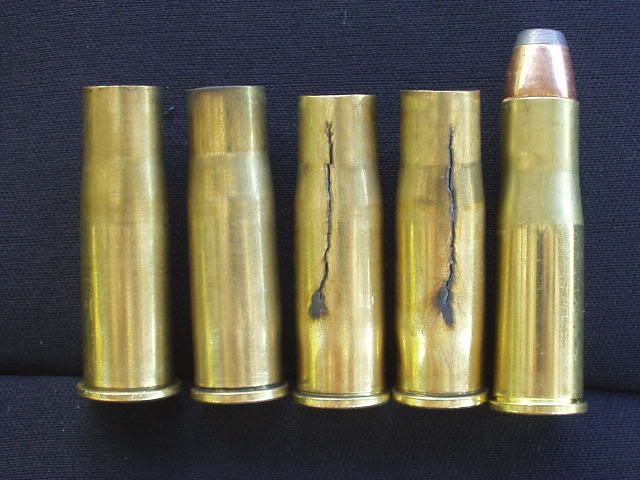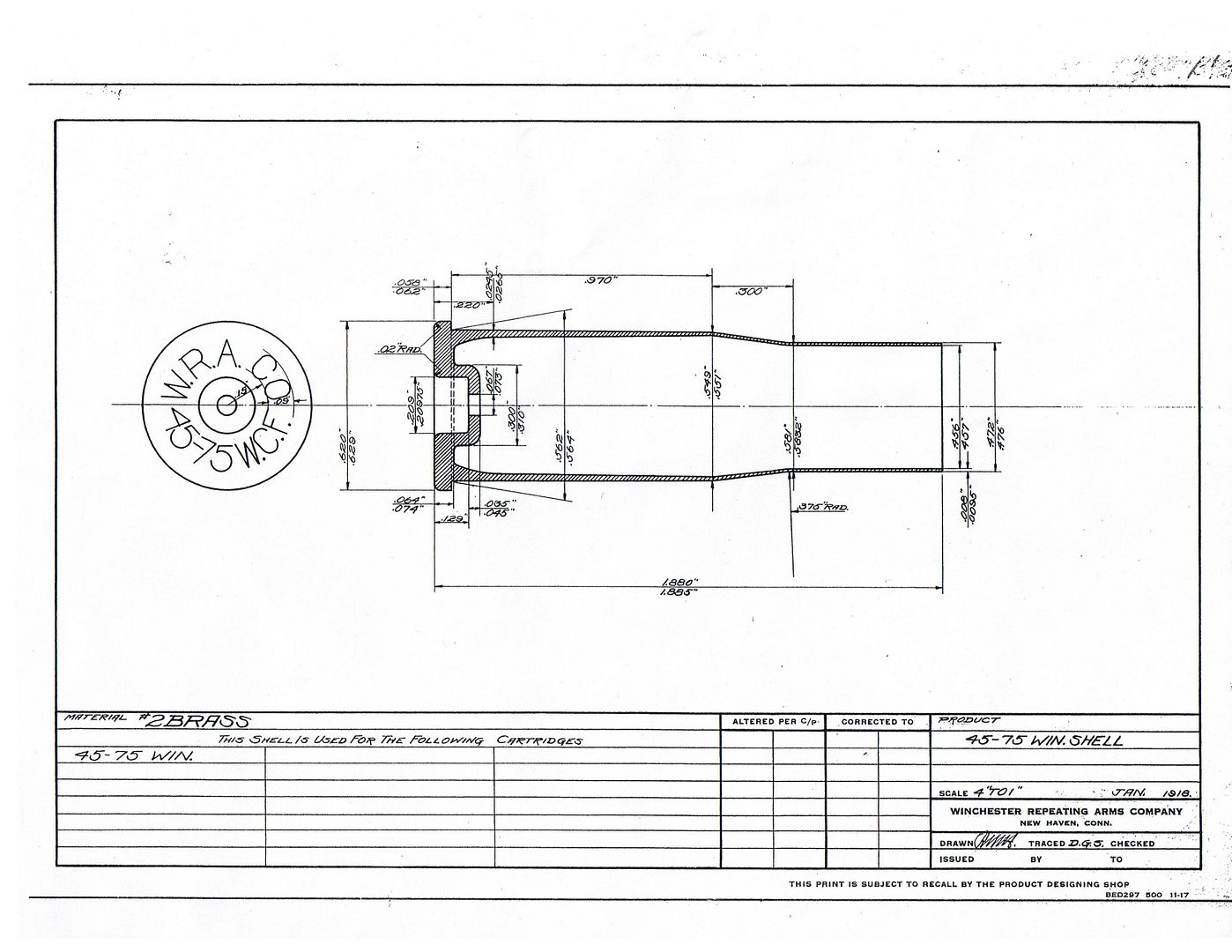- anneal brass before forming otherwise some will split on firing
- .50-90 Sharps brass will feed two rounds from the "magazine", no more, as the rim is too big to enter the mag tube! (now why didn't I think to check that)
- even fireforming loads shoot high at 50 yards, 10" high! They were still high at 150 yards!
- Buffalo Arms ammo was only 5-6" high at 50 yards.
 To illustrate in the photo at left you can see how the relatively hard Starline brass, further work hardened in forming, couldn't handle the light 15-18K CUP of the fireforming loads. It was recommended that I anneal after forming and I will likely try that as well. Either way, this is an additional step that I was hoping to avoid. The reformed Winchester .348 Winchester brass starting softer than the Starline, not a single case using .348 Winchester brass has split as these did.
To illustrate in the photo at left you can see how the relatively hard Starline brass, further work hardened in forming, couldn't handle the light 15-18K CUP of the fireforming loads. It was recommended that I anneal after forming and I will likely try that as well. Either way, this is an additional step that I was hoping to avoid. The reformed Winchester .348 Winchester brass starting softer than the Starline, not a single case using .348 Winchester brass has split as these did. These light bullet loads shoot awfully high with the issue sights, on the order of 10-12 inches high at only 50 yards. Rounds impact about 10" high even out at 150 yards. Calculations by one correspondent show that the bullets likely cross the line of sight at about 25 and 225 yards with the issue sights. Now that is usable for a soldier in late 19th century battles but to somebody who'll be hunting with this gun and is accustomed to late 20th and early 21st century sighting practices, a more usable system will be needed. In other words I expect that I'll either have to raise the front sight height or get a tang peep sight. However, I'll wait on that until I get a good usable load to which I can zero the rifle.
Also, I received another version of the cartridge specification/drawing.























No comments:
Post a Comment